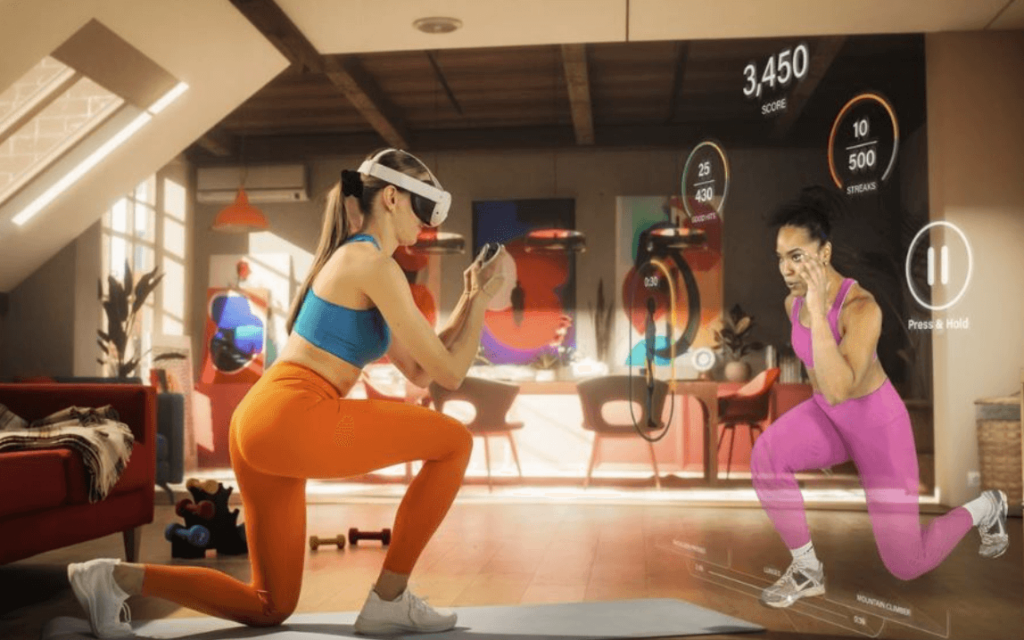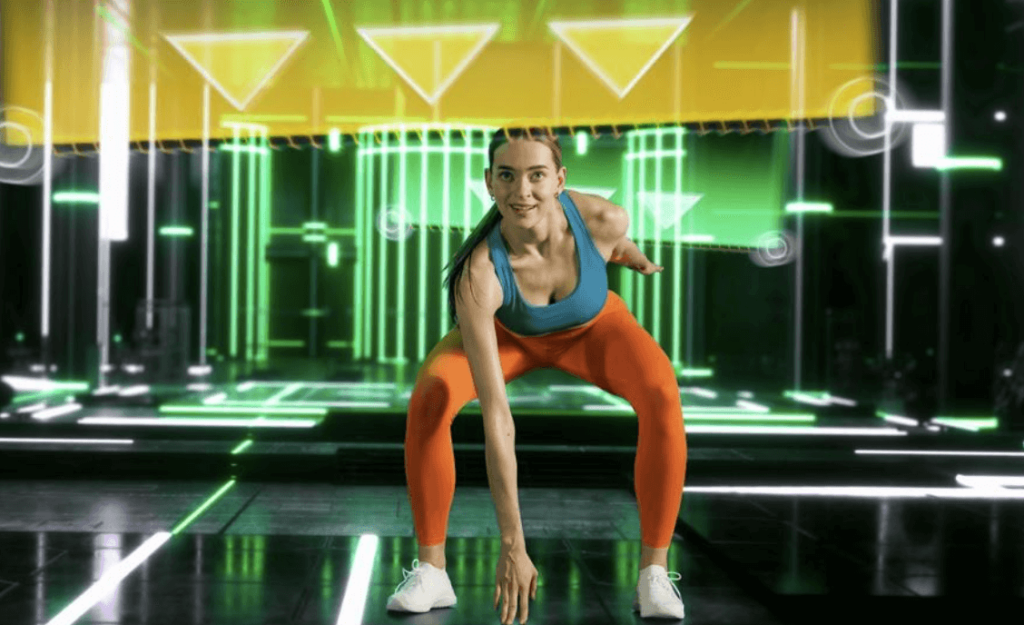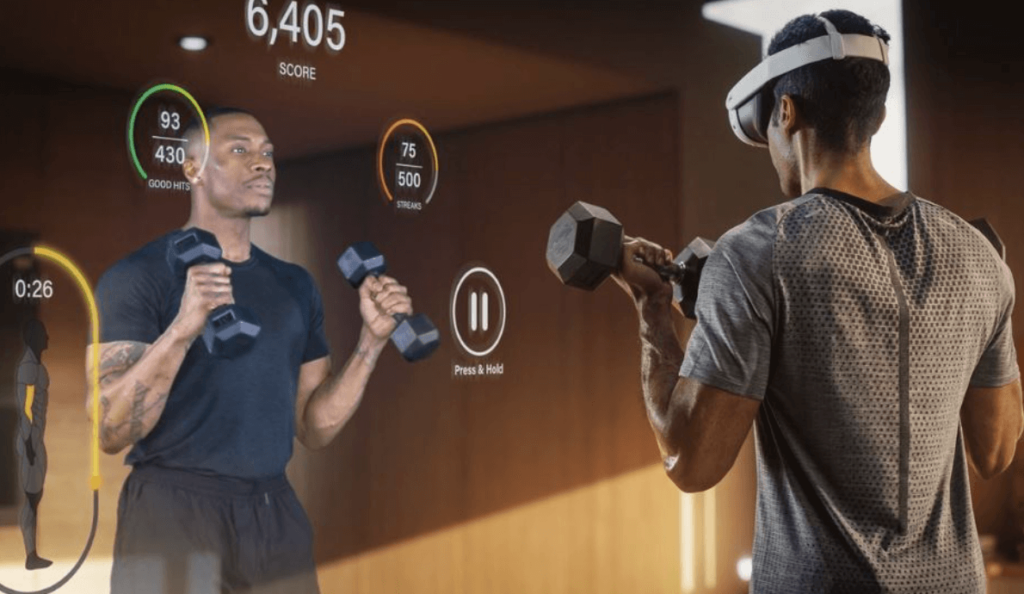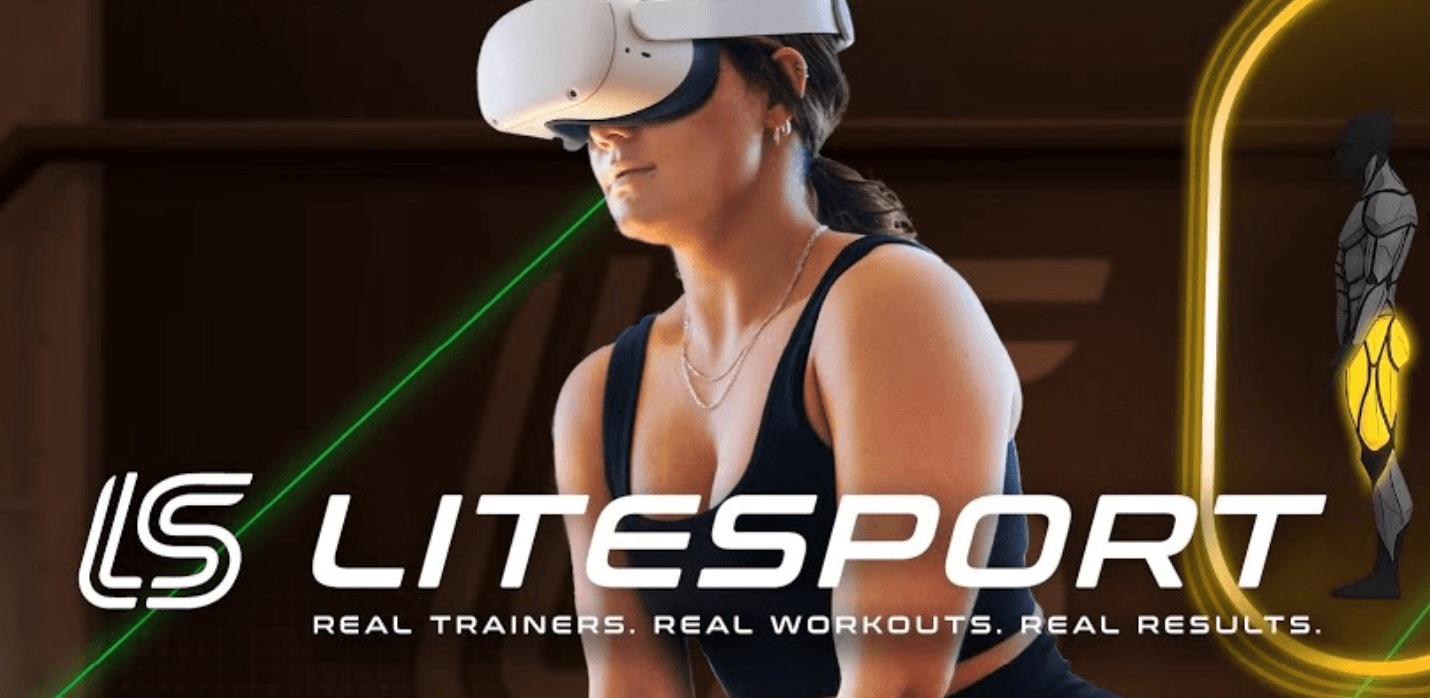Fitness is evolving beyond gyms and treadmills—virtual reality now offers immersive workouts that rival real-world training. With advancements like Bigscreen Beyond 2’s pancake lenses (boosting field-of-view by 30%) and featherlight designs, VR headsets are no longer clunky distractions but precision tools for movement. Litesport leverages this shift, turning your headset into a personal trainer, boxing coach, and yoga studio. Imagine burning calories in a Himalayan vista or sparring in a neon-lit arena—no commute, no membership fees.
Redefining Fitness in Virtual Reality
Why does this matter? Traditional exercise struggles with engagement: 65% of gym memberships go unused. VR fitness combats boredom through dynamic environments and gamified goals. The Beyond 2’s rapid sales—doubling its predecessor’s launch-day figures—signal a tech-savvy audience hungry for immersive experiences. Litesport meets this demand, merging high-intensity workouts with VR’s escapism. Ever skipped a run because treadmills felt monotonous? The solution might be strapping on a headset instead.

This isn’t niche tech. Tom’s Guide found simple tweaks like alternating speeds during walks increased calorie burn by 20%—proof that structured, engaging routines yield results. Litesport applies this principle digitally, offering adaptive programs that respond to your pace. Whether you’re a VR enthusiast with a Beyond 2 or a Quest user craving variety, the era of solitary dumbbells is fading. Fitness is becoming virtual, and your living room is the new frontier.
Precision Engineering Meets Adaptive Fitness
Litesport’s effectiveness hinges on hardware innovations like the Bigscreen Beyond 2’s redesigned pancake lenses, which eliminate edge distortion during rapid movements—critical for boxing or dance routines. Unlike bulkier headsets, its 127g frame (lighter than a baseball) reduces neck strain during 30-minute HIIT sessions. UploadVR’s hands-on tests noted the headset’s “zero light leakage” design, crucial for maintaining immersion when squatting or lunging. SteamVR tracking integration allows Litesport to map full-body motion via Knuckles controllers and waist trackers, correcting form in real time. Missed a punch angle? The system nudges you with haptic feedback—a feature absent in Meta’s Quest Pro.
The Beyond 2’s sales surge—outselling its predecessor’s *months* of revenue in a single day—reflects a fitness-ready audience. Road to VR attributes this to its modularity: Users can pair it with Vive Trackers for leg-day analytics or attach resistance bands to SteamVR base stations. Litesport exploits this flexibility, offering weighted virtual gloves (adjustable up to 10lbs) that simulate dumbbells without cluttering physical space. One beta tester reported burning 450 calories in 40 minutes during a “Mountain Climb” session—20% more than their Peloton routine.

Tom’s Guide’s speed-variation principle is hardcoded into Litesport’s AI. The app analyzes your heart rate via wrist sensors (Quest 3S) or external monitors, auto-adjusting resistance or tempo. Sprint through a virtual obstacle course, and it might lengthen sprint intervals if your stamina improves. Slack on reps? Expect shorter rest periods. This mirrors personal trainer tactics but at a fraction of the cost—$29/month versus $100/hour in-person sessions.
Beyond calorie burn, Litesport tackles muscle imbalances. During a UploadVR demo, asymmetrical tracking flagged a user’s weaker left hook, prompting targeted drills. The app’s “Recovery Mode” even integrates breathwork in Zen gardens, using the Beyond 2’s 120Hz display to sync visual flow with inhalation patterns. It’s a holistic approach most VR fitness apps overlook—90% of Oculus Move users skip cooldowns, per Meta’s 2024 data.
Pro tip: Pair the Beyond 2 with a sweat-resistant facial interface (sold separately). Early adopters reported lens fogging during burpees—a fixable flaw. For Quest users, attach controller grips to prevent slippage during overhead presses. And always clear your play area: One Redditor fractured a toe mid-squat when their virtual trainer distracted them from a coffee table.
Litesport’s hidden gem? Community leaderboards tied to real-world races. Finish a 5K in the app’s Central Park simulation, and you’ll unlock discounts for the NYC Marathon. It’s gamification with stakes—something Apple Fitness+’s badges lack. As VR hardware becomes a lifestyle staple, Litesport isn’t just replacing gyms. It’s redefining what “fitness” means—one immersive rep at a time.
Conclusion: The Future of Fitness Is Immersive—Here’s How to Own It
VR fitness isn’t a novelty—it’s a paradigm shift. Litesport’s success hinges on merging hardware precision with behavioral psychology. The Bigscreen Beyond 2’s record-breaking sales (doubling its predecessor’s launch-day revenue in an hour) prove users crave immersive, distraction-free training. But adoption requires strategy. Start small: Swap one weekly gym session for a 20-minute Litesport HIIT class. Use wrist-based heart rate tracking (Quest 3S) or sync a chest monitor to maximize calorie burn via real-time adjustments.

Safety and sustainability matter. UploadVR’s hands-on tests highlight the Beyond 2’s featherlight build for multi-hour sessions, but prioritize ergonomics: Attach anti-slip grips, and set reminders to hydrate. Leverage Litesport’s Recovery Mode—its breathwork sequences, synced to 120Hz visuals, reduce injury risks Meta’s data shows 90% skip. Pro tip: Map your play area with SteamVR’s Chaperone system. One Redditor’s toe fracture underscores the cost of ignoring environmental awareness.
Finally, think beyond workouts. Litesport’s community integrations—like marathon training discounts—transform fitness into social currency. As Road to VR notes, the Beyond 2’s modular design invites upgrades: Add Vive Trackers for form analytics or weighted gloves for resistance. The question isn’t “Is VR fitness effective?” but “Are you ready to redefine your routine?” The living room isn’t just a gym anymore—it’s a portal to peaks, arenas, and progress.

